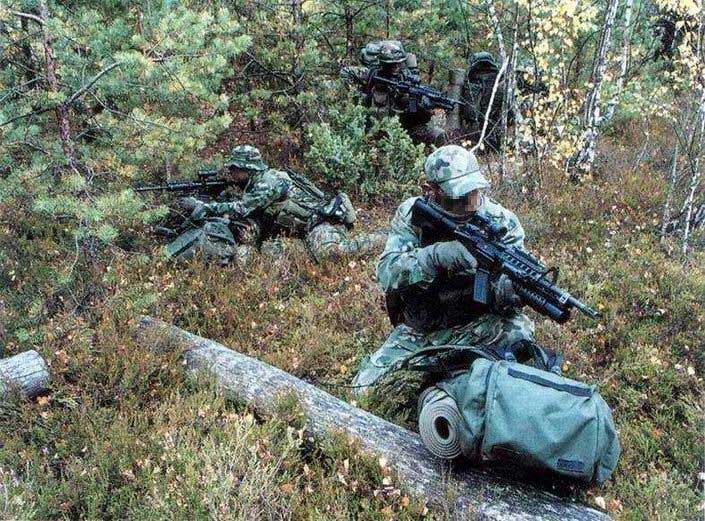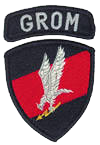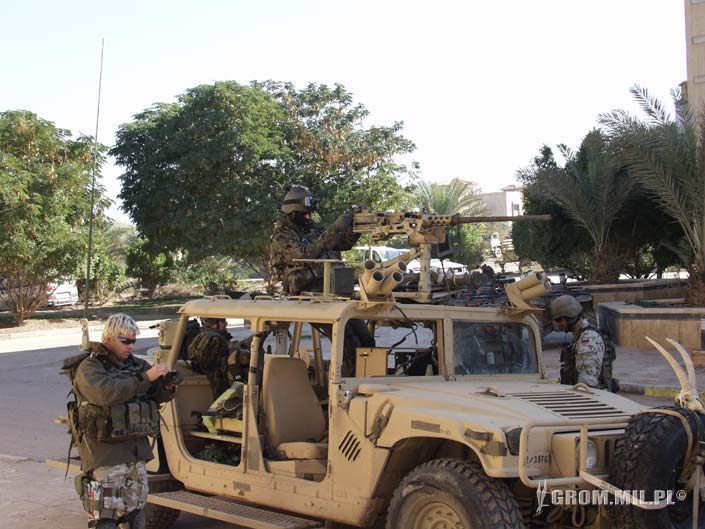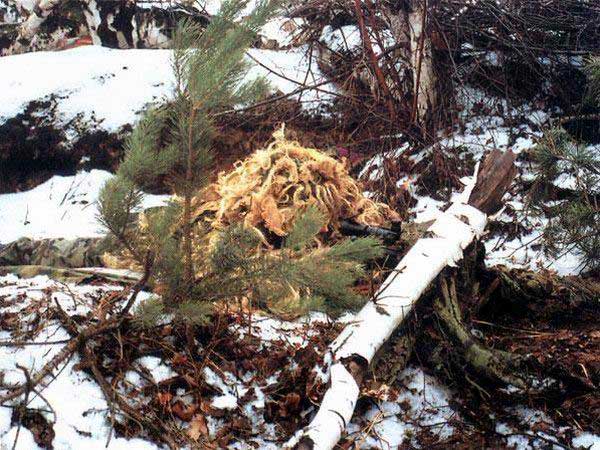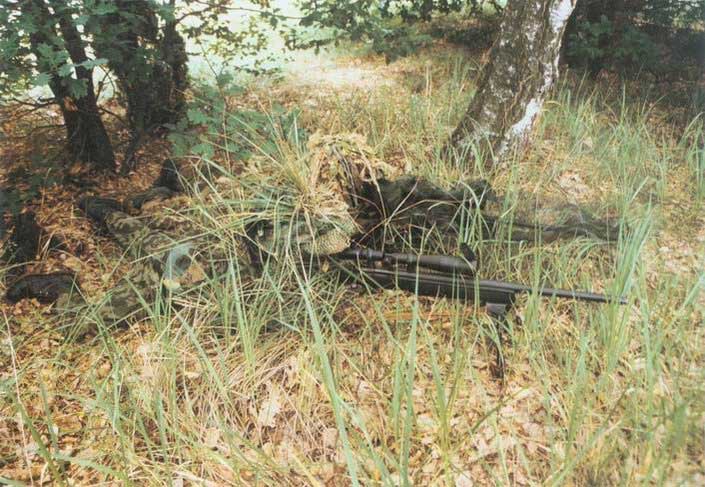Unit Profile
Grupa Reagowania Operacyjno-Manewrowego (Operational Mobile Response Group) or GROM is a special unit that depending on needs can perform typical reconnaissance and sabotage tasks. The unit was founded on July 13th, 1990 by General Slawomir Petelicki as Jednostka Wojskowa 2305 or JW 2305 (military unit 2305) and organised according to both American and British Special Forces models. The name actually stems from a special-forces commander, Gromoslaw Czempinski, who, during the first Gulf War, led a Polish unit into Western Iraq to rescue a group of CIA operatives. One of the other men on that secret mission was Slawomir Petelicki. Petelicki tried selling his idea of an elite Polish commando group much earlier but the Russians did not like to have real special forces operating in Poland. They feared the unit could start training in guerrilla warfare against them. But the need did arise in 1990, following Operation Bridge, in which Poland helped Soviet Jews enter Israel. Intelligence reports indicated that Hezbollah and the Popular Front for the Liberation of Palestine were planning reprisals inside the Polish border. Then Prime Minister Tadeusz Mazowiecki recognised the threat and approved of Petelicki's plan for a new counter-terror force.
Its members also have skills useful in complex rescue operations aimed at rescuing hostages from terrorists. They are also prepared for marine operations (on vessels and drilling towers). All of them undergo specialised training in anti-terrorist and special operations, as well as scuba diving, sniping and parachute jumps. In four-man teams, each soldier must be prepared to assume the respective responsibilities of his colleagues, should it become necessary. Approximately 75% of the soldiers are trained medics or paramedics. In addition, each group is supported by several professional physicians. It is assumed that all GROM operators are proficient in at least two foreign languages.
Candidates applying to serve in the GROM have to pass psychological and durability tests and the so called truth test, i.e. exhausting physically and psychologically field test during which the weakest fail.
In 1994 it participated in the mission of the allied forces on Haiti. In June 1995 they made the extraction of Polish officers captured by Serbs in Bosnia possible. In 1997, they successfully captured war criminal Slavko Dokmanovic inside the former Yugoslavia Republic. In October 2001 they participated in the war in Afghanistan. In spite of their success the unit became under criticism and was almost divided up between the Polish Army en Navy. The existence of the unit was saved when 56 commandos from the 300-member GROM took part in Operation Iraqi Freedom. Together with US Navy SEALS they helped clear the port of Umm Qasr and nearby oil terminals and also participated in the capture and holding of the Mukarayin Dam, which could have been used to flood Baghdad.
Mission
- Direct Action
- Counter Terrorism
- Unconventional Warfare
Size
- Said to be 270 to 300 men organised in squads of 4.
Raised and Disbanded
- Raised: July 8, 1990, GROM formally established as JW 2305
Headquarters
- Warsaw, Gdańsk, Poland
Operations
For the past twelve years, GROM operators have engaged in numerous operations, including peacekeeping in the Balkans and Haiti. In 1997, they successfully captured Slavko Dokmanovic, aka, "the Butcher of Vukovar" who was held responsible for the murder of 260 Croats. Despite being well-protected by Serb commandos, Dokmanovic was successfully captured alive (his bodyguards didn't fare so well).
| 1991 | Operation Desert Storm | GROM operators manages to get out six CIA-agents out of Iraq. |
| 1992 | Macierewicz briefcases" affair (escorting duty during political problems in Poland). | |
| 1992 | Assault on residence and arrest of one of the bosses of Art B (Another great political and economic scandal). | |
| 1992-1994 | Actions against Russian Mafia in Poland (details unknown, but the operation was stopped by the Polish authorities, allegedly because of GROM's overzealous approach to the former KGB agents that turned into mob after the Soviet collaps). | |
| 1994 | Operation Restore Democracy | The unit saw quite a bit of action during the savage riots on Haiti. |
| 1994 | Rescue of four Polish engineers taken hostages in Angola. | |
| 1995 | Rescue of two Polish officers taken hostages and used as live shields by Bosnian Serbs near Sarajevo | |
| 1996 | UNTAES mission in Eastern Slavonia (arrest of Slavko Dokmanowic they have since managed to arrest at least six more Yugoslavian war-criminals) | |
| 1996 | Bodyguard duties during US ambassador W.G Walker's mission in Kosovo and Macedonia. | |
| 1998 | Rescue of five Poles taken hostages in Chechnya in the Caucasus. | |
| 1999 | Bodyguard duties during US ambassador W.G Walker's mission in Kosovo and Macedonia. It is reported (unofficially) that the unit operated behind Yugoslavian lines to identify artillery fire targets etc. | |
| 2000 | Unknown mission in Northern Ireland. | |
| 2001 | Hunt for war criminals in Kosovo. | |
| 2001 | Recon mission in Afghanistan before the arrival of Polish troops. | |
| 2002 | Mission in Afghanistan (VIP body guarding and base protecting duties). | |
| 2002 | Mission in Persian Gulf. At the beginning of September, some GROM members were seen training on US ships near Bahrain coast. | |
| 2003 | GROM soldiers take part in an Iraq operation. | |
| June 8th, 2004 | Rescue operation of the Italians, Umberto Cupertino, Maurizio Agliana and Salvatore Stefio of Italy and Gerzy Kos of Poland |
Training
The average age of recruits is about 26. GROM candidates were first subjected to a gruelling psychological examination meant to search for confident and innovative soldiers as well as those who, though they might be lacking in physical strength, possessed the rare gift of internal iron will. The candidates then undergo back-breaking training deep in the Carpathian Mountains.
Only 1 to 5 percent of these candidates actually get into GROM. But once they are in, the real training begins: GROM operators practice "killing house" entries (with commanders often serving as hostages), storm hijacked commercial airliners complete with mannequin terrorists and bullet traps, and lead raids onto ships and offshore platforms. All of this is done with live ammunition. The commandos are trained in paramedics and demolitions and many are SCUBA experts. They mostly work in four to six-man assault teams except for the snipers who are separate because that is a job for special people and they are very hard to replace.
Cold Killing
GROM operators are said to be martial arts experts and capable of cold killing. They have created their own style of martial arts. It was created by a sixth degree black belt master of karate and jujitsu. He created the style with other specialists. It is most similar to what the Israelis do.

